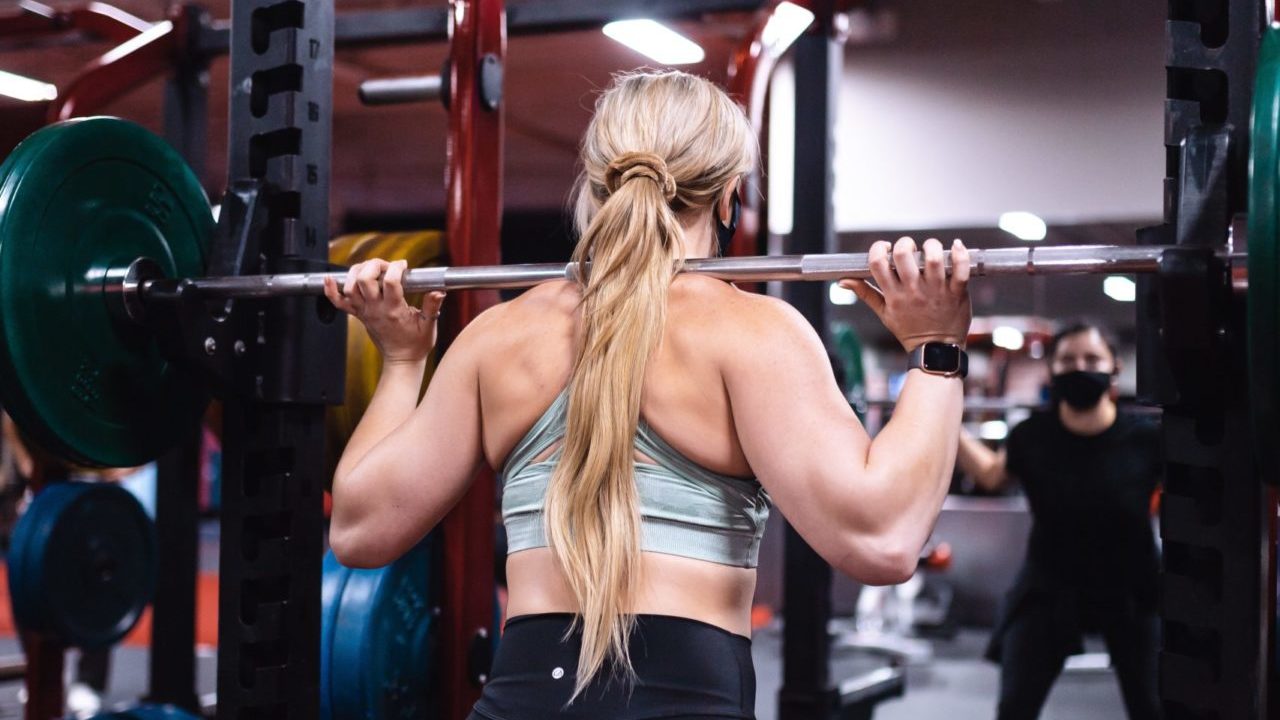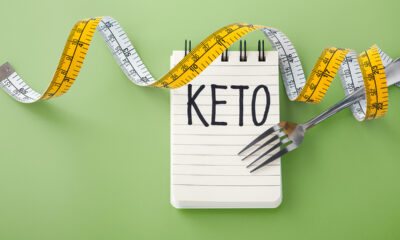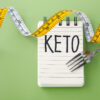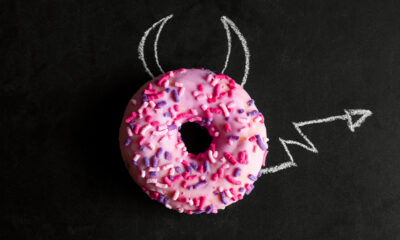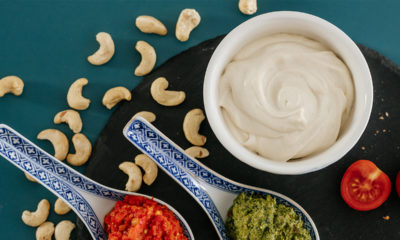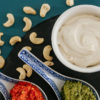Health
Fat On The Inside: Hidden Truths
The more we study fat, the more complicated the picture becomes. What’s clear, however, is that where you store fat and how you accumulate it – internally or externally – can have a massive impact on your health.
My body looked the same from the outside – slim as usual – but all of a sudden, reading the results of a blood test, I felt really fat on the inside. I’m one of those lucky people with a fast metabolism, have always eaten my fill of foods I enjoy and barely alter my size and weight no matter what I stuff in my face. But regardless, the figures I was reading on my blood test suggested I was potentially a TOFI – thin on the outside, fat on the inside. My cholesterol levels were high! Not dramatically high, not crazy high, but high enough for the doc to look at me disapprovingly and launch into a barrage of further questions. It was a surprise, honestly. I’ve always exercised and I’m slim, I eat a lot of fruit and veg… but with these results, I started wondering. What exactly had caused the high cholesterol levels?
Journey of discovery
This being some years ago, before scientists acknowledged that fat really isn’t the singular cause of being fat, I assumed my high cholesterol levels had something to do with my love of butter and cream. But although it might seem as though eating fat – even saturated fat – would make you fat, it simply doesn’t work like that. Getting some fat inside you is key to staving off hunger and also ensuring your body doesn’t store every calorie as fat on your thighs. When you eat fat, you tend to eat fewer carbs because you’re satisfied more quickly. Fat reaches your small intestine where digestive hormones cholecystokinin and peptide YY are released, helping to regulate your appetite and giving you that nice full feeling. Insulin, your metabolism regulator which promotes the absorption of carbohydrates, is released by you ingesting carbs. That’s not to say you should eat a diet high in fat if you want to lose weight. Fat is a highly packed source of calories, however, and, as you know, too many calories in balance to how much you exercise can lead to being fat, inside and outside.
However, while my predilection for creamy sauces and cheese wasn’t necessarily the healthiest aspect of my diet, it was likely that other factors were at play in triggering those high cholesterol levels.
Stress was a likely factor. In fact, according to Dr. Marilyn Glenville, author of Fat Around the Middle, stress is one of the main causes of fat in the abdominal area, which, on someone like me (nearly 6ft tall) wouldn’t necessarily look like I’m fat on the outside… instead I could be storing that fat inside, where it could be putting me at greater risk of heart disease, diabetes and even infertility. At the time I was working hard and taking care of two young kids and we’d also moved to a new country. Yep, so that’s more than plenty of stress then.
Fat and stress are more closely linked than you might realize. When we think of fat in our bodies, we usually imagine yellowish blobs right under our skin, causing those unpleasant rolls or even the puckering of what ‘should’ be smooth skin. But scientists now view fat in a very different way – as an organ itself. This is because it doesn’t just ‘sit there’, it sends out hormone signals throughout your body, triggering other effects such as mood changes, appetite changes and even changing your fertility levels.
And the relationship between mood changes and fat goes both ways. Fat affects your mood, and your mood affects your fat. It does this in several ways: stress tends to trigger overeating and eating unhealthy foods, but also cortisol, the hormone released when you’re stressed, promotes fat storage right there in your midriff. Research published in the journal Obesity Research shows that women who have larger waists in proportion to their hips also tend to produce more cortisol when confronted with stressful situations.
Overpowering fat
Even though I knew this, I was still concerned, and continued to investigate the factors involved in visceral fat build up. While some visceral fat is required – your organs need some cushioning inside your body, so it’s healthy to have some – it’s an excess of this fat we should all be worried about.
And I was delighted to discover that one of my favorite activities helps prevent fat accumulating to excess. Lifting! Fat deposits are more likely to settle in and around underused muscles, and once they’re there, they’re also cozying up to your vital organs, which puts your health at such high risk.
Strength training works wonders on that internal fat. For example, a study published in the International Journal of Obesity involved three groups of obese women put through different types of programs: one group did nothing different to usual, a second group went on a diet, and the third group went on a diet and did strength training. The strength training group did nine muscle moves, including lateral pulldowns, shoulder presses, crunches, standing leg curls among others, doing 10-15 reps, 3-4 sets, and they also did explosive training with leg extensions and bench presses. After 16 weeks, both group 2 and 3 had lost around the same amount of weight (15.4lb/7kg) and decreased their waist size by 2.75in/7cm. What’s more, their BMI had dropped too. But, when the researchers did MRI scans, they found that the women who had done strength training had lost significantly more visceral fat between their lumbar discs, fat that is closest to the liver where it potentially does significant damage to your health.
Identifying possible factors in my high cholesterol levels and the potential for harmful ‘invisible’ fat made me look at fat – on myself, on other women and men, on children and babies – in a new way. I began to notice the different kinds of ways people are fat and this is actually really important to health, far more important than your overall weight or even size. Subcutaneous fat is what makes babies look cute and chubby, it’s what gives you healthy plump skin as an older teenager and in your twenties. It’s also what makes Sumo wrestlers so big. OK, so you might assume that they would have dangerously high levels of visceral fat, being obese, but actually they don’t. When researchers from Waseda University, Tokyo, Japan put Sumo wrestlers through MRI scanners to look at their fat levels, they found they had very little internal fat, despite having an average body mass index (BMI) of 56! Not only this but they have low insulin resistance and low triglyceride levels, ie they’re healthy on the inside even though they look insanely obese on the outside.
For women, the location of fat is critical. A woman with fat (or wide) hips and fat thighs isn’t fat in the same way as a woman who’s less curvy but carries a thick waist. Perhaps counterintuitively, that thick solid waist is potentially more dangerous than a wobbly muffin-top type of waist. Estrogen encourages fat to build up around your bottom and thighs, and although that might seem like a bad thing, it’s actually heart protective. The fat around your middle, however, is putting your life at risk – you’re at risk of heart disease, diabetes and liver problems too. The location of the fat is key.
New life metrics
It’s clear that BMI, or feeling or looking ‘fat’ isn’t the best indicator of how much visceral fat we have. Having high cholesterol levels also doesn’t necessarily mean you have dangerous levels of visceral fat, although it should certainly serve as a warning sign to investigate further. I didn’t want to shell out a small fortune for a MRI scan to figure out if I had a big problem with visceral fat, so I used two at-home methods.
The first method involves simply measuring your waist and hips, then divide the waist measurement by the hip one. The figure should be 0.85 or lower (for men, this figure is 1). If your figure is higher, it shows a lower ratio between your waist and hips – and that’s not good. My figure came out okay, so I tried a second test. Standing against a wall, holding a stiff flat board against your stomach so you can measure distance between the front (belly button) and back of your abdomen (the depth of your abdominal area). Now take the same measurement while lying down on a hard surface. Do not hold your tummy in for either measurement. If the depth of your midriff is the same regardless of the position, it’s likely you do have an excess of visceral fat. This is because visceral fat, unlike subcutaneous fat, won’t move or settle in the same way and so won’t change the measurement. If your midriff is cuddly because of subcutaneous fat, mainly, the figure will change because those cuddly parts will fall, leaving you with a lower measurement.
When I did this measurement, it indicated that it was unlikely I had an excess of visceral fat. So my only concern was my high cholesterol level. There is some evidence that stress even at the time of a blood test can alter not only blood pressure, but cholesterol levels. According to research from University College London, when study participants were put under pressure to increase stress levels, they all saw their cholesterol levels rise immediately afterwards, but for certain individuals the response was more pronounced. Then, when the researchers followed up the study participants three years later, they found that the individuals who had had more pronounced responses to the stress test – with higher cholesterol levels – showed higher cholesterol levels overall, compared to their more relaxed counterparts.
After all this research and worry, the visceral fat tests, the picking apart my diet and lifestyle, I did another blood test a few months later and my cholesterol levels were completely normal. Through all this, however, I learned some key lessons – always get a second opinion or do a test again if the results don’t seem to match with your expectations, and fat is a beautiful thing, especially when it’s in the right places!


